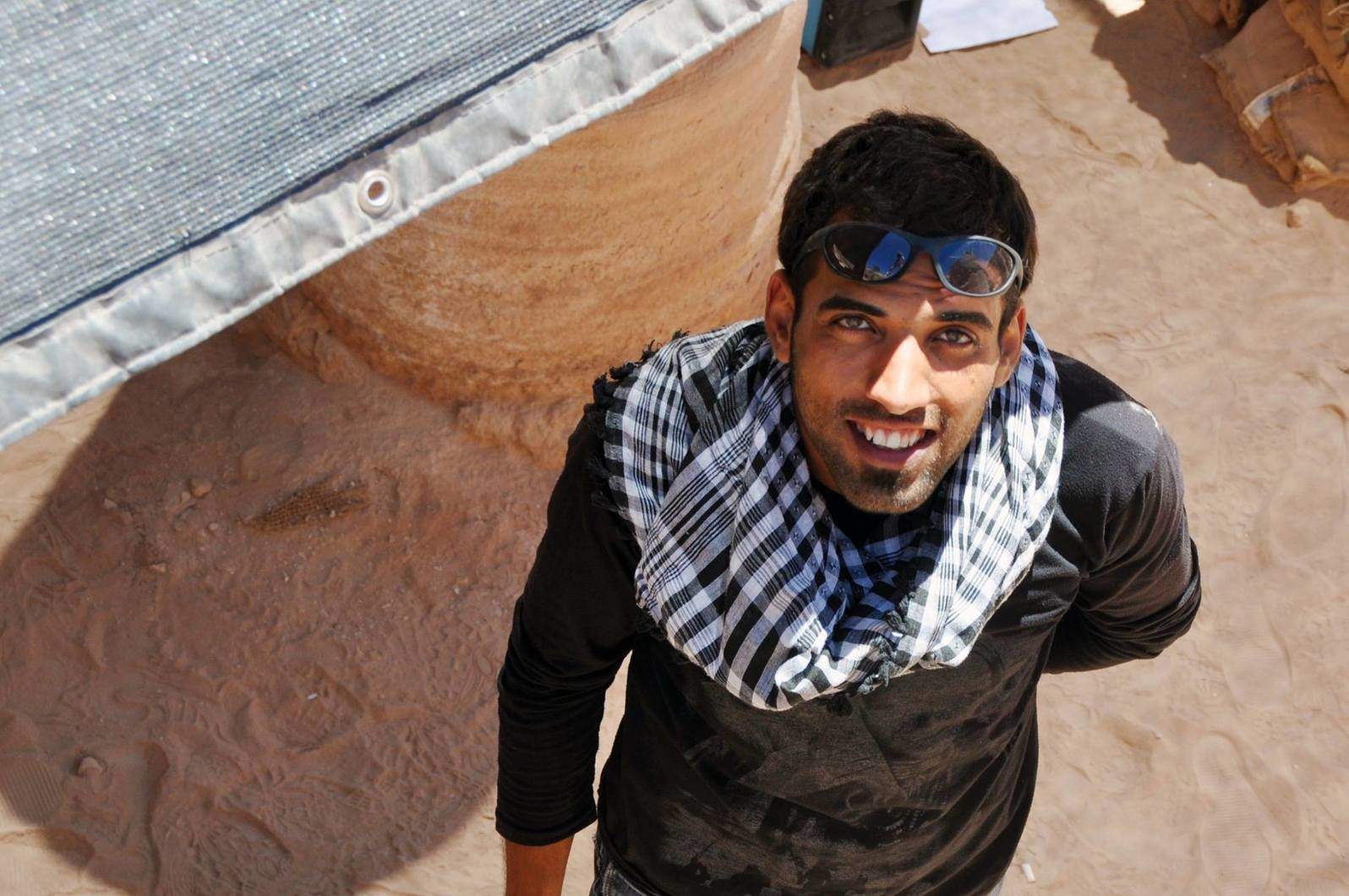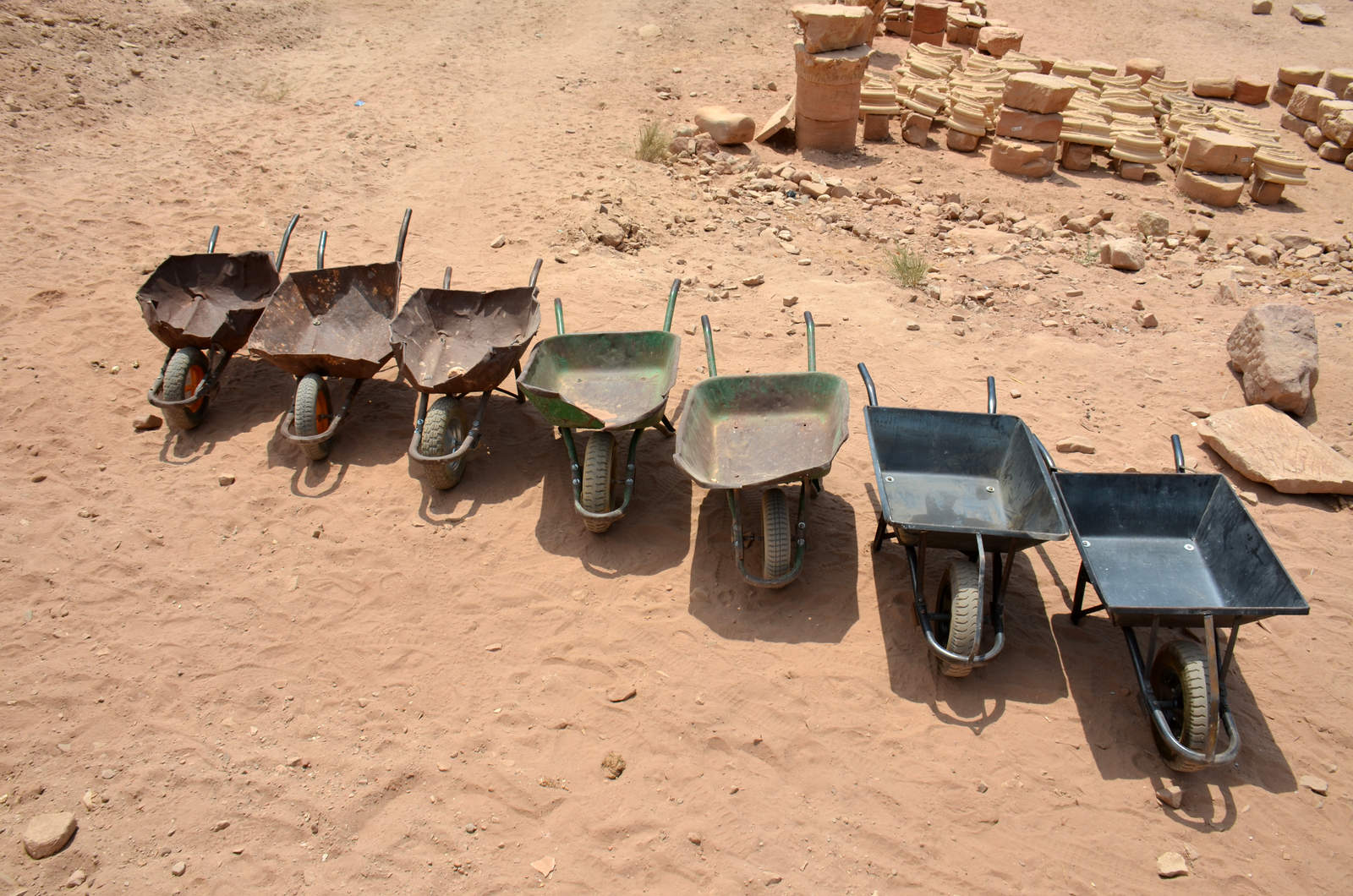
Ahmad Hasanat isn’t one for making career choices based on movies.
“My main motivation wasn’t Indiana Jones,” he said, discussing his professional origin story over cups of fresh brewed tea, steaming against Petra’s cold January air. Instead, Hasanat’s reason for becoming an archaeologist was simple: “I fell in love with this thing.”
Growing up amongst the ruins of an ancient society, Hasanat found himself wondering about the culture and religious practices of the Nabataeans who once inhabited Petra. His childhood fascination grew stronger as he grew older, pushing him to earn a degree in archaeology from Al Hussein Bin Talal University, and eventually to a job within Petra working for the Temple of the Winged Lions Cultural Resource Management (TWLCRM) Initiative.
Though Hasanat was a local and experienced archaeologist, finding a job within Petra was not easy. He approached the TWLCRM because of the project’s reputation for hiring locally, and applied for work with as much enthusiasm as he could muster. “Actually, I kept calling Chris for 15 times,” he said, laughing at the memory of his appeal to former project director Christopher Tuttle, now Executive Director of the Council of American Overseas Research Centers.
Hasanat says that most people who work in Petra probably have wealthy relatives or other advantages which helped them secure their jobs. Given this, he was thrilled when the TWLCRM Initiative hired him. “I was working in the site where I belonged,” he explained. “I feel I belong for the site, for Petra.”
Hasanat’s modesty hides keen talent and steady competence. Before his tenure at the TWLCRM, he worked with archaeologist Thomas Levy of the University of California, San Diego, and mastered complex computer and digital technologies that he subsequently used to support the work of the TWLCRM. Several animations of Hasanat’s three-dimensional computerized models of the temple’s architecture feature prominently on the TWLCRM Facebook page.
Though the TWLCRM Initiative allowed him to achieve his dream of working on an archaeological project within Petra, Hasanat found himself harboring a secret passion: photography. He began taking pictures of Petra with a small, low-resolution camera phone and quickly fell in love. But he knew he needed a real camera. “I came to Chris and asked him where to get a new camera,” remembered Hasanat, “I was interested to take photos for TWLCRM.” Tuttle told him to find out everything he could about camera brands, bodies, and lenses. So Hasanat searched, learning about the art of photography and how best to capture the beautiful but challenging Petra landscape. When Hasanat chose a camera and showed it to Tuttle on his laptop, Tuttle simply clicked “purchase” on the screen, buying a new camera for the project at Hasanat’s recommendation. “He just ordered that camera without any comment,” said Hasanat.

Tuttle’s decision was not a mistake. Hasanat’s photographs helped document both the work on site and the bright alien beauty of the surrounding landscape. His photography, in addition to receiving numerous “likes” on the TWLCRM Facebook page, earned him first place in the Archaeological Institute of America’s fieldwork photo contest in 2013. He currently showcases his work on his own website, Memories of Wadi Musa, where visitors can experience the remote but awesome beauty of Petra through his photographs.
Hasanat left the TWLCRM Initiative in 2013 to work as a Computer-Aided Design Engineer at the FalconVIZ project, funded by the the King Abdullah University of Science and Technology (KAUST) in Saudi Arabia, and recently returned to Jordan to work for the Petra Archaeological Park as a photographer. He credits the TWLCRM with providing him with the training and skills that helped further his career and, in turn, the project applauds the many ways he contributed to the mission of the TWLCRM Initiative.
Written by Sarah Oeffler

